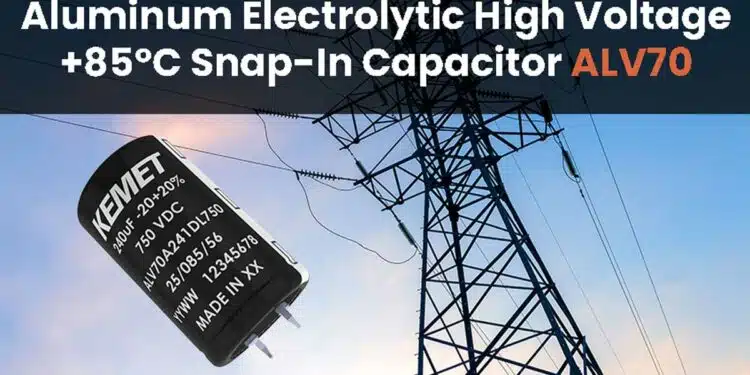YAGEO Group launches industry’s first 750V high voltage aluminum capacitors. The ALV70 series, marking a milestone as the first aluminum electrolytic capacitors in the market to achieve a 750V voltage rating.
YAGEO Group, a global leader in electronic components releases announces the release of its latest innovation, the ALV70 capacitor series.
This groundbreaking series sets a new industry benchmark as the first to deliver an unprecedented 750V voltage capability, offering unparalleled performance for high voltage applications across diverse sectors.
Key Features of the ALV70 Series:
- Unmatched Voltage Rating: First capacitors in the market designed to support 750V, catering to applications with exceptional voltage resilience demands.
- High Capacitance Density: Merges high capacitance with a compact form factor, optimizing space-constrained designs.
- Superior Ripple Current Management: Engineered to handle significant ripple currents efficiently, enhancing reliability in power electronics.
- Robust Thermal Endurance: Offers an operational lifespan of 2,000 hours at +85°C, ensuring durability under standard conditions.
- Compliance with Safety Standards: Incorporates UL-certified PET sleeves and Lexan discs, meeting rigorous industry safety requirements.
Diverse Application Spectrum:
The ALV70 series is tailored to meet the demands of high-performance applications, including:
- Renewable Energy Systems: Ideal for DC link circuits in solar inverters and wind turbines.
- Power Supply Units (PSUs): Ensures high voltage stability in industrial-grade power supplies.
- Electric Vehicle (EV) Powertrains: Perfect for DC/DC converters and onboard chargers in EV systems.
- Medical Equipment: Reliable performance for high-voltage imaging equipment such as CT scanners.
- Aerospace and Defense: Proven durability in avionics systems and radar technology.
- Industrial Automation: Supports motor drives and robotic systems with robust voltage handling.
Why ALV70 Stands Out:
Combining state-of-the-art performance with compact design and strict adherence to safety standards, the ALV70 capacitors redefine possibilities in capacitor technology. Despite a shorter operational lifespan compared to other KEMET series like ALH82, ALC70, and ALC80, their superior voltage endurance and ripple current capability make them indispensable for critical high voltage applications.































